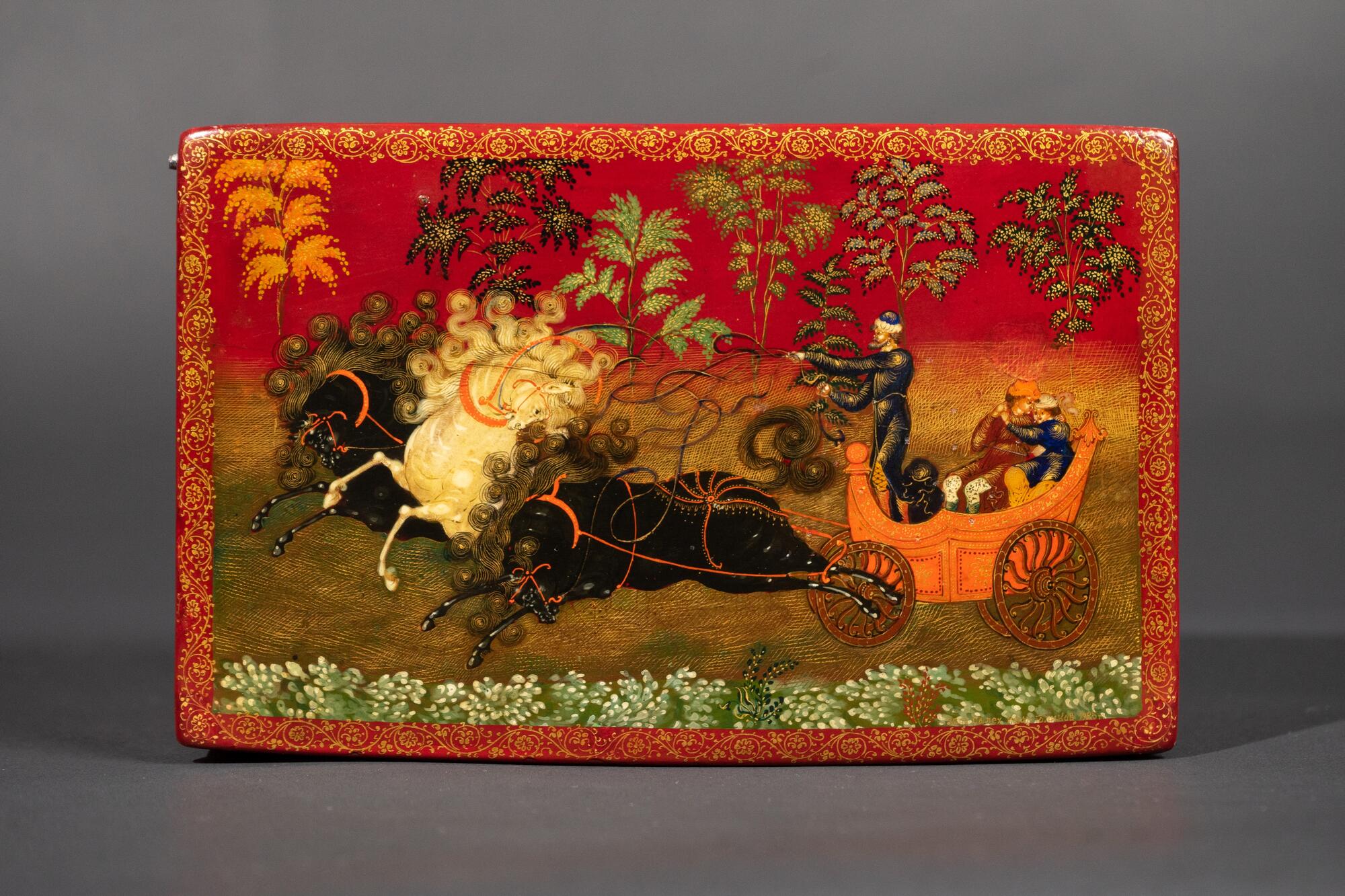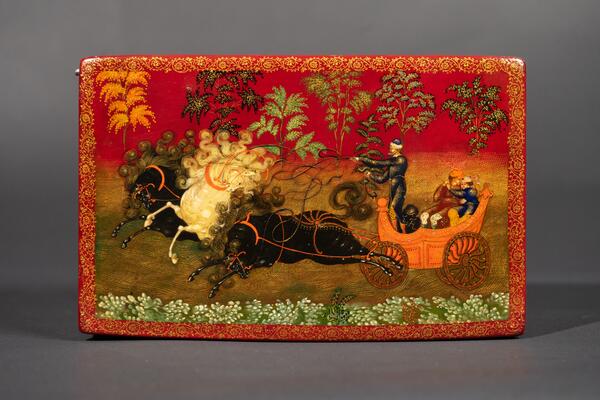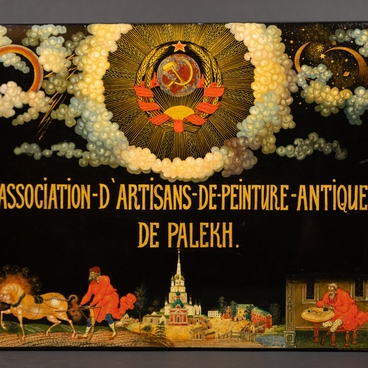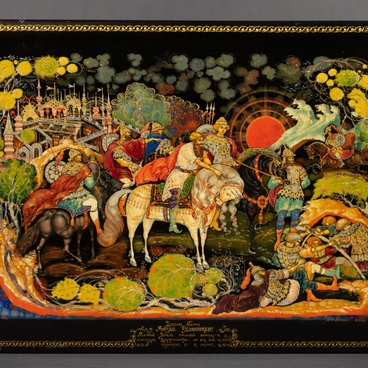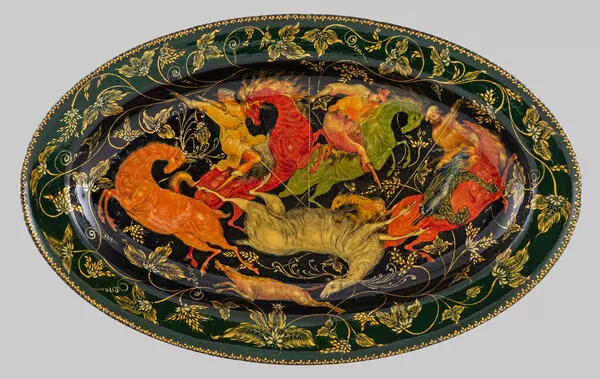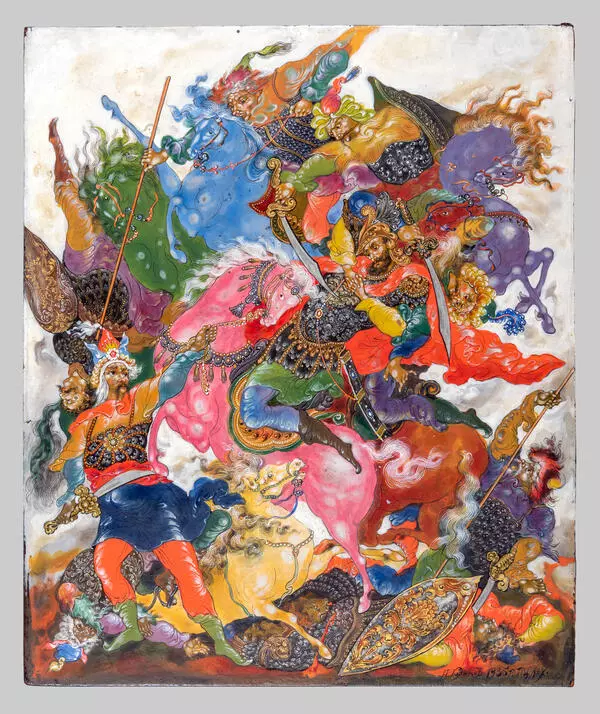A hereditary icon painter, Ivan Golikov, stood at the origins of Palekh lacquer painting.
The artist was born in Moscow in January 1887 (old style — in December 1886). When he was seven years old, his family returned to Palekh. Since the age of ten, he studied in the famous workshop of Nikolai Sofonov, later worked at icon painting workshops in Moscow and Saint Petersburg and painted churches. After the revolution of 1917 and the establishment of Soviet power, which hindered icon painting, the artist started to search for and develop his own artistic style.
Ivan Golikov dwelled for a long time on how and in what form it was possible to preserve original Palekh art, and in the early 1920s he created his first lacquer painting. He was inspired by the boxes from Fedoskino, which the master saw in the Crafts Museum in Moscow (in 1999 its exhibits became part of the collection of the All-Russian Decorative Art Museum).
Art historian Vladimir Porudominsky described the excitement that gripped the artist at that moment:
The artist was born in Moscow in January 1887 (old style — in December 1886). When he was seven years old, his family returned to Palekh. Since the age of ten, he studied in the famous workshop of Nikolai Sofonov, later worked at icon painting workshops in Moscow and Saint Petersburg and painted churches. After the revolution of 1917 and the establishment of Soviet power, which hindered icon painting, the artist started to search for and develop his own artistic style.
Ivan Golikov dwelled for a long time on how and in what form it was possible to preserve original Palekh art, and in the early 1920s he created his first lacquer painting. He was inspired by the boxes from Fedoskino, which the master saw in the Crafts Museum in Moscow (in 1999 its exhibits became part of the collection of the All-Russian Decorative Art Museum).
Art historian Vladimir Porudominsky described the excitement that gripped the artist at that moment:
